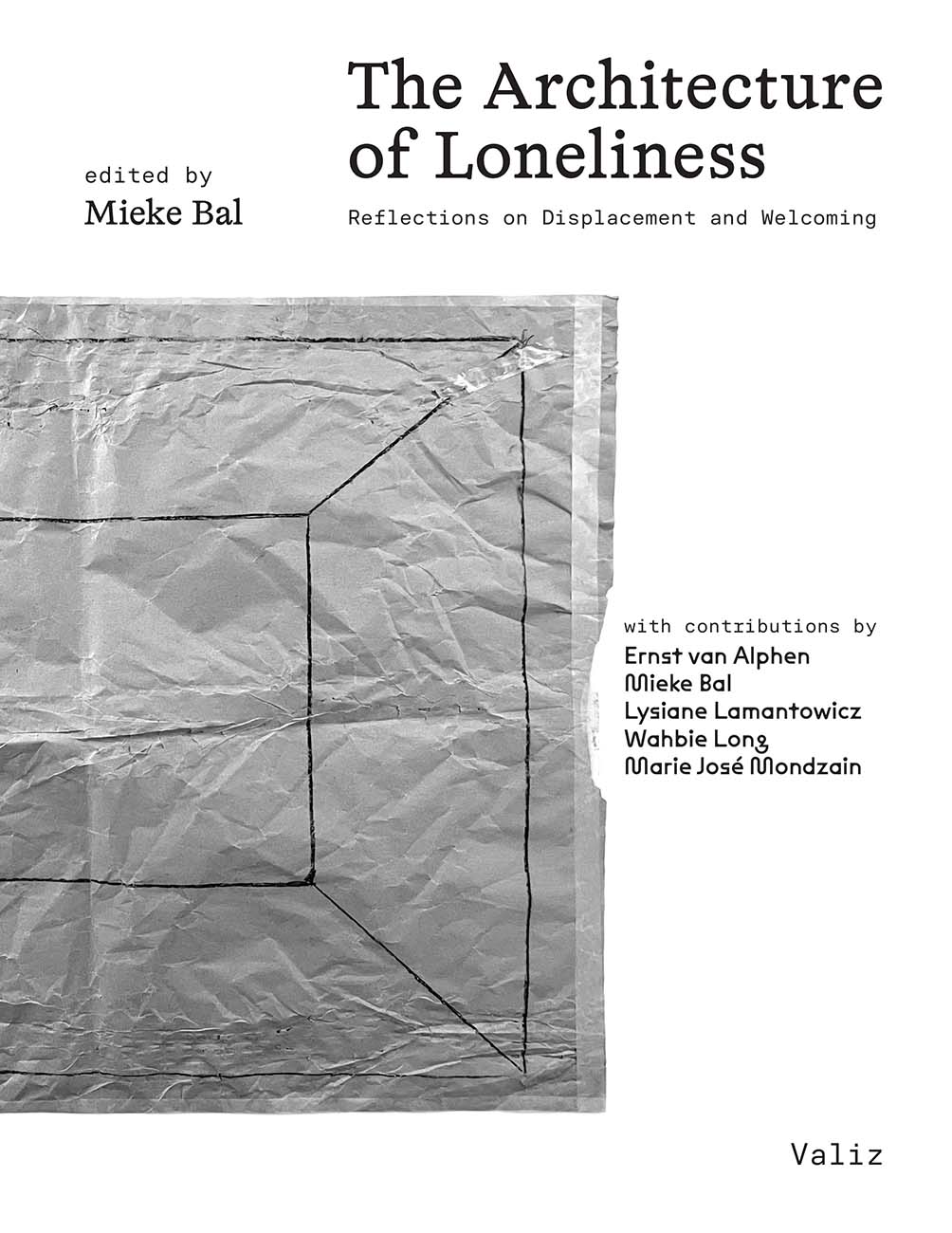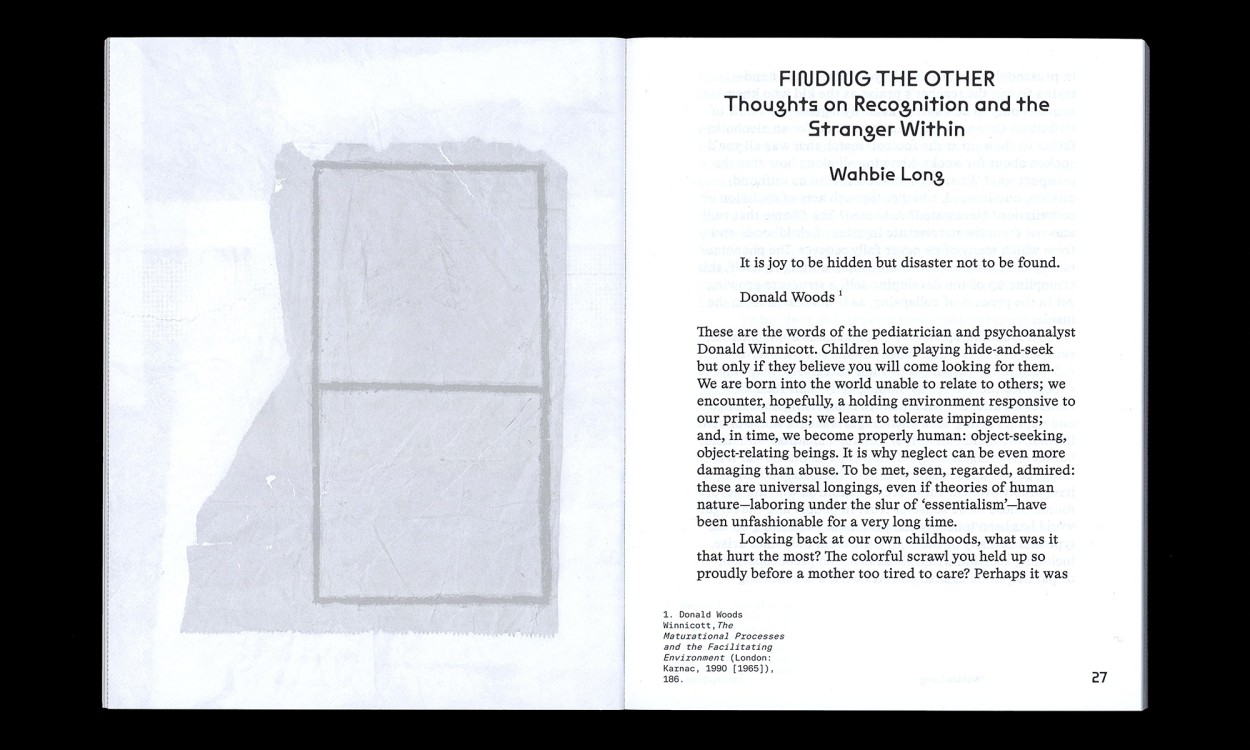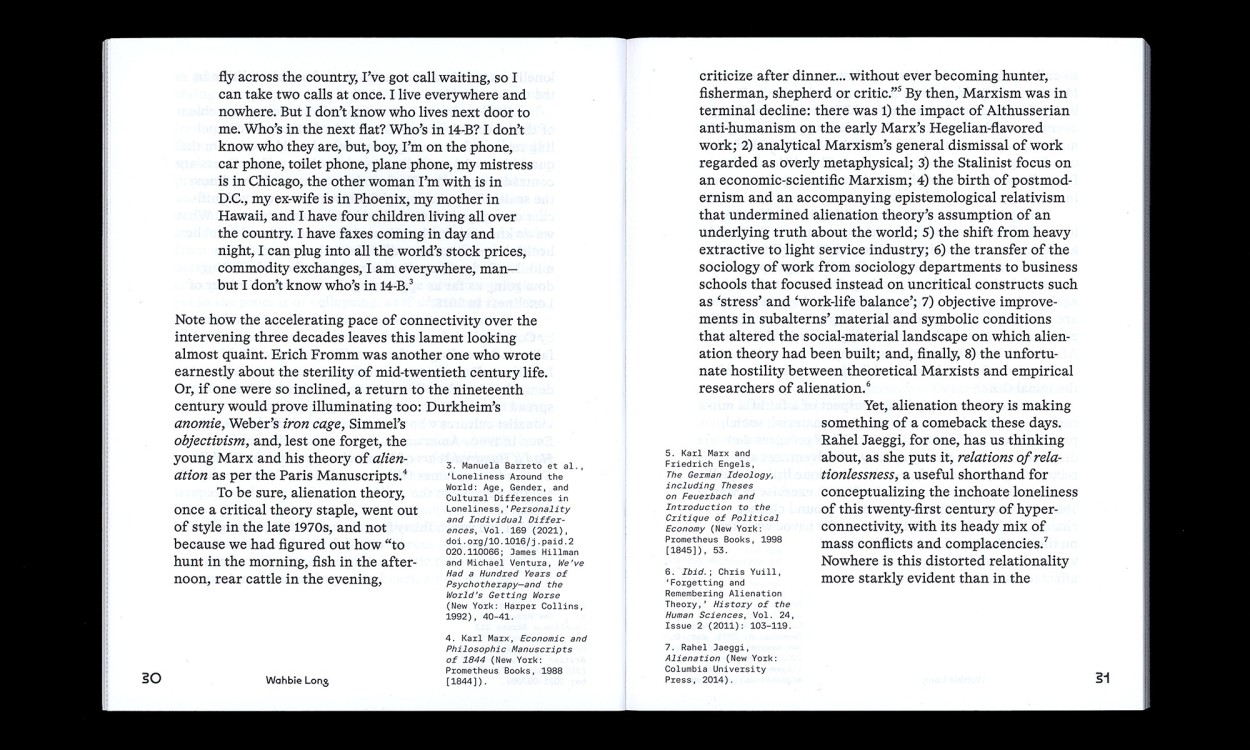The Architecture of Loneliness
Reflections on Displacement and Welcoming

- encourages an open way to look at and interact with ‘the other’
- advocates for sincere and meaningful gestures of welcoming ‘the other’, migrants and displaced people
Auteur: Ernst van Alphen, Mieke Bal, Lysiane Lamantowicz, Wahbie Long, Marie José Mondzain
Redactie: Mieke Bal
Ontwerp: Lotte Lara Schröder
Mei 2024, Valiz | Pb | 128 blz. | 23,5 x 16,5 cm (h x b) | Engels | ISBN 978-94-93246-35-5 | € 22,50
Mieke Bal is a cultural theorist, video artist, and Professor Emerita in Literary Theory.
The aftermath of the Covid restrictions, mental problems, being confronted with the influx of people with a different background and culture, the alienation of ourselves and of others, not being able to relate to other people; these can all cause deep feelings of loneliness. What is loneliness, as different from solitude? Whereas solitude is a chosen condition that refrains from social relations, loneliness suffers from the lack of these.
The three essays in this book each explore a side of loneliness, strongly connected to the encounter with the other. South-African psychologist Wahbie Long lays out what kind of relationships to the outside world emerge from childhood experiences of playing and relating to others. He dives into the difficulty of not only encountering, but finding others. Long brings together a great many aspects that all contribute to the feeling of loneliness that characterizes the lives of migrants, asylum seekers, or refugees on the road.
French philosopher Marie-José Mondzain uses the metaphor of architecture with its terms as threshold, doors, walls, windows, a bench in front of the frontal wall; elements that construct ‘home’, the architectural and emotional place where encounters can happen, where ‘strangers’ should be welcomed and trusted.
French psychoanalyst Lysiane Lamantowicz discusses a form of loneliness that we see all around us: the consequences of social networks on the internet. Although it seems that we are part of a crowd, that we have many ‘friends’, we are in reality alone in front of a computer screen. What is the effect on how people can still relate to the intricacies of real life?
In our current harsh political climate this book encourages a heartfelt interest and connection with your ‘neighbour’, close and far.










